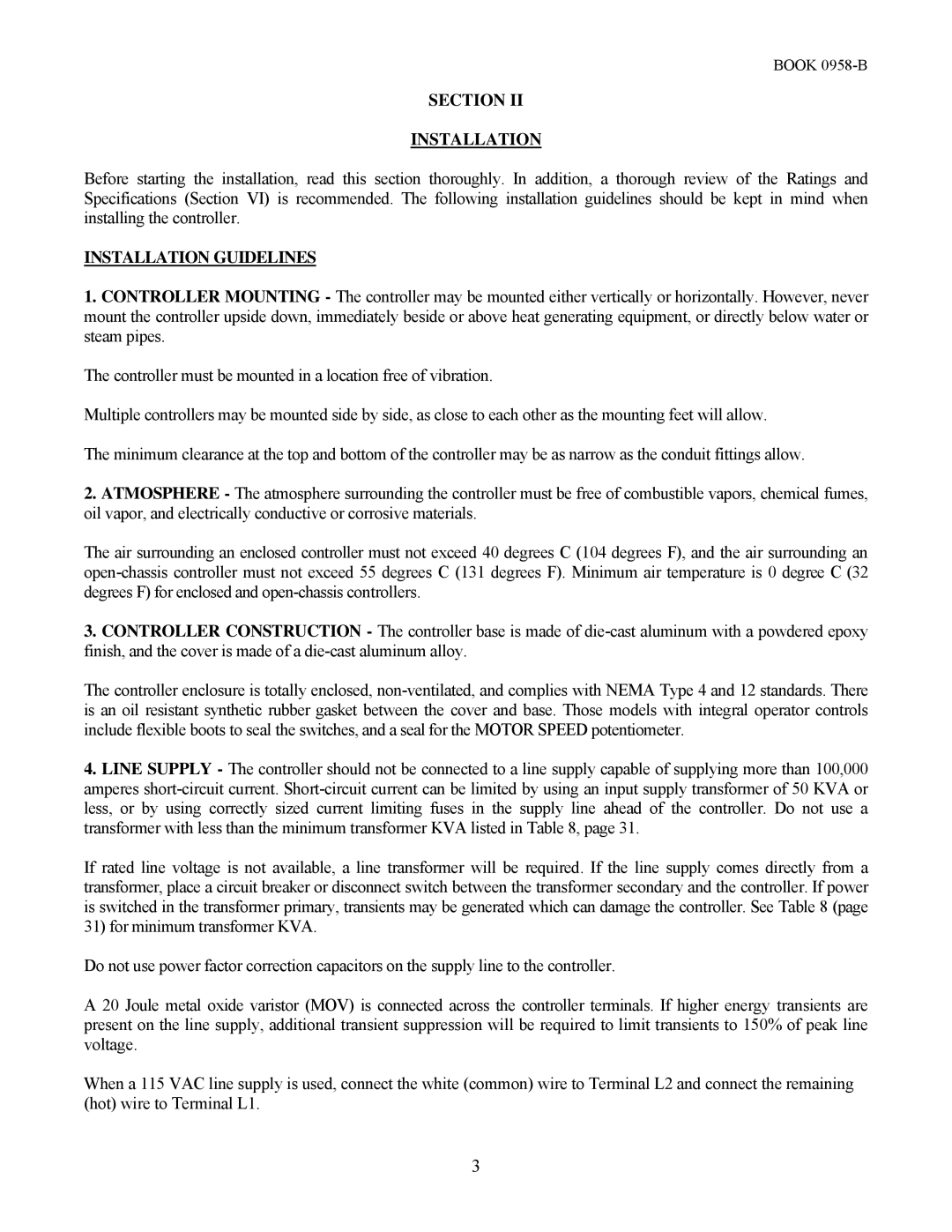BOOK
SECTION II
INSTALLATION
Before starting the installation, read this section thoroughly. In addition, a thorough review of the Ratings and Specifications (Section VI) is recommended. The following installation guidelines should be kept in mind when installing the controller.
INSTALLATION GUIDELINES
1.CONTROLLER MOUNTING - The controller may be mounted either vertically or horizontally. However, never mount the controller upside down, immediately beside or above heat generating equipment, or directly below water or steam pipes.
The controller must be mounted in a location free of vibration.
Multiple controllers may be mounted side by side, as close to each other as the mounting feet will allow.
The minimum clearance at the top and bottom of the controller may be as narrow as the conduit fittings allow.
2.ATMOSPHERE - The atmosphere surrounding the controller must be free of combustible vapors, chemical fumes, oil vapor, and electrically conductive or corrosive materials.
The air surrounding an enclosed controller must not exceed 40 degrees C (104 degrees F), and the air surrounding an
3.CONTROLLER CONSTRUCTION - The controller base is made of
The controller enclosure is totally enclosed,
4.LINE SUPPLY - The controller should not be connected to a line supply capable of supplying more than 100,000 amperes
If rated line voltage is not available, a line transformer will be required. If the line supply comes directly from a transformer, place a circuit breaker or disconnect switch between the transformer secondary and the controller. If power is switched in the transformer primary, transients may be generated which can damage the controller. See Table 8 (page 31) for minimum transformer KVA.
Do not use power factor correction capacitors on the supply line to the controller.
A 20 Joule metal oxide varistor (MOV) is connected across the controller terminals. If higher energy transients are present on the line supply, additional transient suppression will be required to limit transients to 150% of peak line voltage.
When a 115 VAC line supply is used, connect the white (common) wire to Terminal L2 and connect the remaining (hot) wire to Terminal L1.
3
